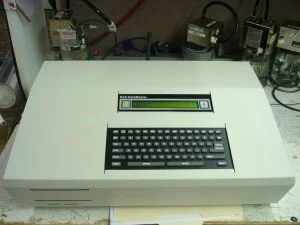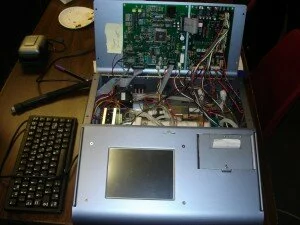
DataMaster - Michigan's Breath Testing Equipment
If you are arrested for drunk driving in Michigan then you will most likely be asked to submit to a breath test. The purpose of this test is to determine the amount of alcohol in your body. The name of the device used in Michigan is the DataMaster. The majority of the DataMasters in use today were manufactured in either 1993 or 1995.
Like Michigan, Wisconsin’s breath testing equipment is aging. There is an interesting and alarming recent case involving this aging equipment where it seems that a pair of breath tests was done on a person arrested for drunk driving using an EC-IR fuel cell. The EC-IR produced results of .224 and .228. These breath tests were 7 minutes apart and there was a simulator test between them.
The person arrested then asked for his own test and was given a blood draw. The sample was sent to the Wisconsin State lab and came back a .014. Nobody believed it so they did a confirmatory test at another lab and it also came back a .014. When it comes to determining bodily alcohol levels, blood testing is thought to be far more reliable than is breath testing.
Now one state lab is pitted against another and everybody just wants to get rid of the problem. Intoximeter (the manufacturer of the EC-IR) is blaming the blood lab - not surprising - and is refusing to acknowledge that their breath testing device made a mistake.
Everyone involved in Wisconsin appears to be afraid to investigate the issue. Here are some possible explanations for what happened:
Problem with EC-IR in Wisconsin case might include:
- Floating Decimal Point - The breath test results are .224 and .228 while state blood draw hour later is .014. If you just move the decimal point, then one hour earlier (when breath test occurred) the driver could actually have had a .0224 and .0228 breath alcohol reading. This result would comport with the possible parameters of alcohol metabolism.
- Problems with chamber temperature.
- Contamination.
- Software extrapolation (algorithm integration problem ).
- High calibration - check simulator solution or dry gas and regulators, true calibration problems.
- Software degradation - Software ages and get corrupted with time or self-imposed degradation. This does happen and might have occurred on this unit.
- Plunger problems and carryover contamination.
Michigan does not use the EC-IR in the investigation of drunk driving cases, but instead uses the DataMaster. However, in the list above, the items of greatest concern is that involving the floating decimal problem and the software aging problem. It is particularly this later issue that may cause problems in Michigan.

New DMT - Set to go in Service in Michigan in Late 2009.
However, it is expected that sometime this year Michigan will replace the aging DataMaster units with a new and improved version called the DMT, an acronym which means “DataMaster Transportable.” This new breath testing device is expected to be placed into service as soon as July 2009. This at least will solve the aging software problem.
Currently there are about 260 “old” DataMasters in Michigan. So far, the state has bought about 140 new DMTs.
In Michigan there are no known cases like the one in Wisconsin. Many other types of anomalies have been observed, but these anomalies are not supported by a much lower blood test result.
Comments on this entry are closed.